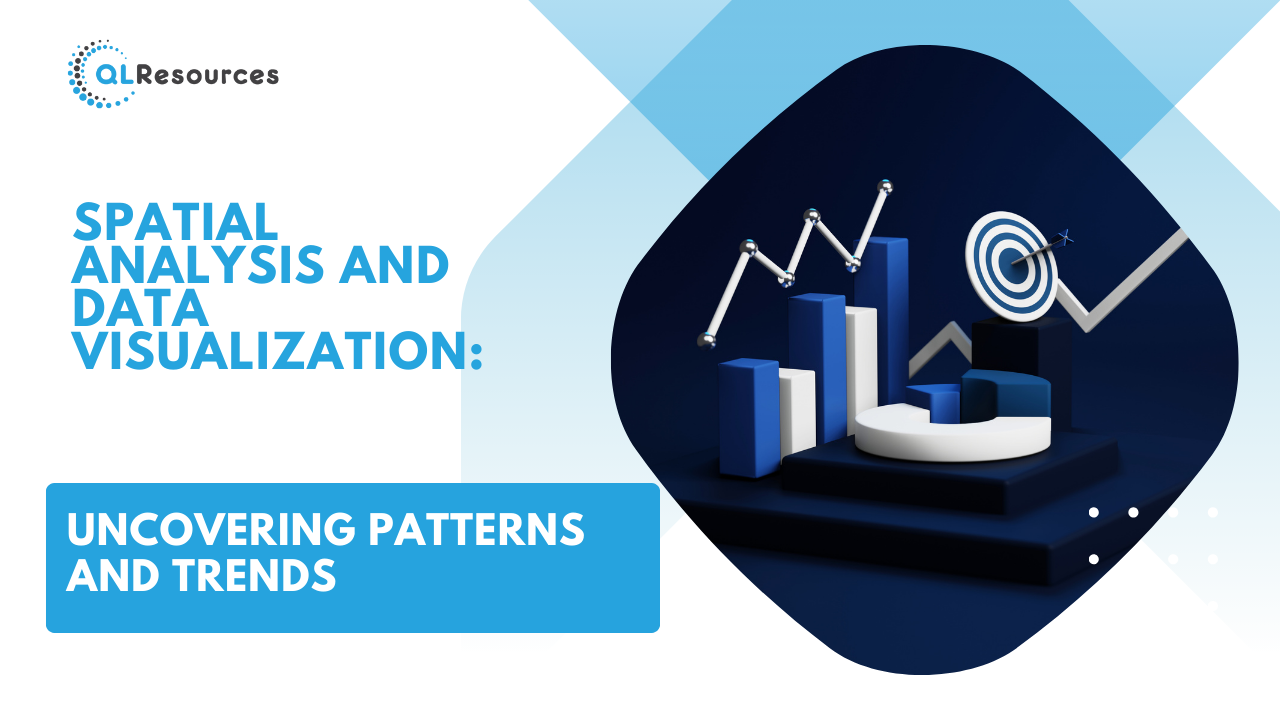
Spatial analysis and data visualisation are powerful tools that enable researchers, analysts, and decision-makers to gain insights from geospatial data, uncovering patterns, trends, and relationships that may not be apparent through traditional analysis methods alone. In today’s data-driven world, spatial analysis and data visualisation play a crucial role in various fields, including urban planning, environmental management, public health, and business intelligence. This article explores the importance of spatial analysis and data visualisation, highlighting their applications, benefits, and best practices for uncovering patterns and trends.
1. Understanding Spatial Analysis:
Spatial analysis involves examining the spatial relationships, patterns, and processes inherent in geospatial data. It encompasses a range of techniques, including spatial statistics, spatial modeling, and network analysis, to analyse geographic phenomena and extract meaningful insights from spatial data sets.
2. Importance of Data Visualisation:
Data visualisation is the graphical representation of data to communicate information effectively and intuitively. By visually depicting complex data sets through charts, graphs, maps, and interactive dashboards, data visualisation enables users to explore data, identify trends, and make data-driven decisions with greater clarity and understanding.
3. Applications of Spatial Analysis and Data Visualisation:
Spatial analysis and data visualisation find applications across various domains, including:
Urban Planning: Analysing land use patterns, transportation networks, and urban growth.
Environmental Management: Assessing habitat suitability, monitoring environmental changes, and predicting natural disasters.
Public Health: Mapping disease outbreaks, identifying health disparities, and planning healthcare facilities.
Business Intelligence: Analysing customer demographics, market trends, and competitor locations.
Emergency Response: Identifying vulnerable populations, assessing evacuation routes, and coordinating disaster response efforts.
4. Techniques for Spatial Analysis:
Spatial analysis techniques include:
Spatial Clustering: Identifying clusters of similar features or events using clustering algorithms.
Spatial Regression: Examining the relationship between spatially distributed variables using regression analysis.
Spatial Interpolation: Estimating values at unobserved locations based on nearby observations using interpolation methods.
Network Analysis: Analysing the connectivity and accessibility of spatial networks, such as road networks or social networks.
Hotspot Analysis: Identifying statistically significant clusters of high or low values in spatial data sets using hotspot analysis techniques.
5. Principles of Effective Data Visualisation:
Effective data visualisation follows several principles, including:
Clarity: Ensuring that visualisations are clear, concise, and easy to interpret.
Relevance: Presenting only relevant data and focusing on key insights.
Interactivity: Allowing users to interact with visualisations to explore data from different perspectives.
Aesthetics: Using colors, shapes, and typography effectively to enhance visual appeal without sacrificing clarity.
Accessibility: Ensuring that visualisations are accessible to users with diverse needs, including those with disabilities.
6. Tools for Spatial Analysis and Data Visualisation:
There are numerous tools available for spatial analysis and data visualisation, including:
Geographic Information Systems (GIS) software: Such as ArcGIS, QGIS, and MapInfo for spatial analysis and mapping.
Data Visualisation Platforms: Such as Tableau, Power BI, and D3.js for creating interactive visualisations and dashboards.
Statistical Software: Such as R, Python (with libraries like Pandas, Matplotlib, and Seaborn), and SPSS for advanced data analysis and visualisation.
7. Best Practices for Uncovering Patterns and Trends:
Best practices for spatial analysis and data visualisation include:
Understanding the data: Conducting exploratory data analysis to understand the characteristics and limitations of the data.
Choosing appropriate techniques: Selecting the right spatial analysis techniques and visualisation methods based on the nature of the data and the research question.
Iterative process: Iteratively refining visualisations and analysis techniques based on feedback and insights gained from initial exploration.
Communicating results: Clearly communicating findings and insights through well-designed visualisations and reports that tell a compelling story.
Conclusion:
Spatial analysis and data visualisation are indispensable tools for uncovering patterns and trends in geospatial data, enabling informed decision-making across various domains. By applying spatial analysis techniques and best practices in data visualisation, analysts and decision-makers can gain valuable insights, identify spatial patterns, and derive actionable intelligence from complex data sets. In an increasingly data-driven world, spatial analysis and data visualisation will continue to play a vital role in understanding our environment, addressing societal challenges, and driving innovation and progress.